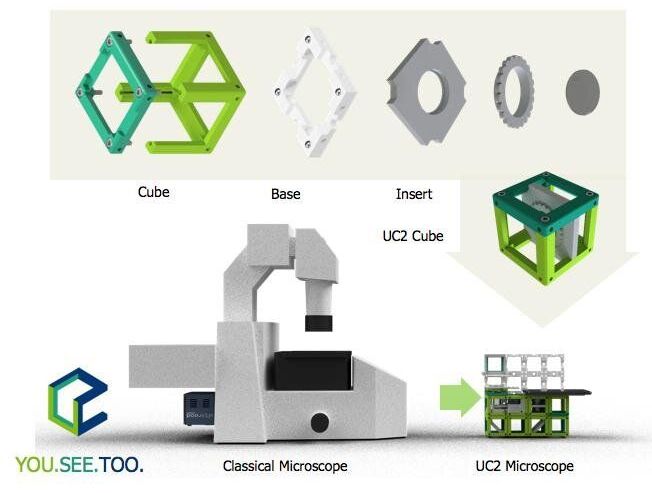Modern microscopes used for biological imaging are expensive, are located in specialized laboratories and require highly qualified staff. To research novel, creative approaches to address urgent scientific issues—for example in the fight against infectious diseases such as COVID-19—is thus primarily reserved for scientists at well-equipped research institutions in rich countries. A young research team from the Leibniz Institute of Photonic Technology (Leibniz IPHT) in Jena, the Friedrich Schiller University and Jena University Hospital wants to change this: The researchers have developed an optical toolbox to build microscopes for a few hundred euros that deliver high-resolution images comparable to commercial microscopes that cost a hundred to a thousand times more. With open-source blueprints, components from the 3D printer and smartphone camera, the UC2 (You. See. Too.) modular system can be combined specifically in the way the research question requires—from long-term observation of living organisms in the incubator to a toolbox for optics education. The research team presents its development on November 25, 2020 in the renowned journal Nature Communications.
The basic building block of the UC2 system is a simple 3D printable cube with an edge length of 5 centimeters, which can host a variety of components such as lenses, LEDs or cameras. Several such cubes are plugged on a magnetic raster base plate. Cleverly arranged, the modules thus result in a powerful optical instrument. An optical concept according to which focal planes of adjacent lenses coincide is the basis for most of the complex optical setups such as modern microscopes. With the UC2 toolbox, the research team of Ph.D. students at the lab of Prof. Dr. Rainer Heintzmann, Leibniz IPHT and Friedrich Schiller University Jena, shows how this inherently modular process can be understood intuitively in hands-on-experiments. In this way, UC2 also provides users without technical training with an optical tool that they can use, modify and expand—depending on what they are researching.
